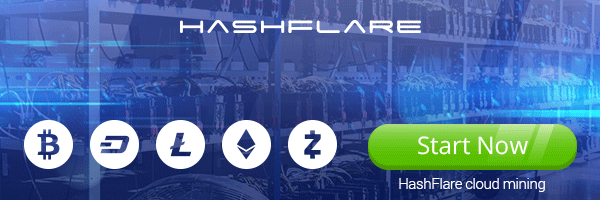
Lugui Tillier is the commercial director for Lumx Studios, one of the top cryptocurrency firms in Rio de Janeiro —a city with a burgeoning crypto industry.
But for Tillier — who holds dual citizenship between Belgium and Brazil — cryptocurrency is more than a job. It was a passion sparked by a friend, and it evolved into his first full-time crypto job with Lumx in 2021.
1) How did you get into crypto?
I was very fortunate because Alexandre Vasarhelyi, the stepfather of one of my closest friends, was the one who co-founded the first crypto fund here in Brazil in 2017 — BLP Crypto. Before that, he was always talking to me about crypto and blockchain, telling me it was the future and that I should learn more about it. So around 2019, I finally listened to him and deep-dived into Bitcoin. But until then, it had been nothing more than a secondary interest to me. I graduated in marketing from ESPM, one of the leading marketing universities in LATAM, and in 2021, when I saw in blockchain the expression of the connection between brands and people through NFTs and the Metaverse, I pivoted my entire life to crypto and began working at Lumx where I have had the pleasure of integrating Web3 solutions into companies such as Nestlé, Ab InBev, META, BTG Pactual, among others.
2) Tell us about Lumx and what you do for them.
We are a blockchain abstraction solution for big enterprises. We help anyone who wants to integrate blockchain into their business, or companies that want to deploy projects or experiment on blockchain. We developed our own solution for account abstraction, payments, decentralized identity (DID), and smart contracts. Now, big companies can mostly focus only on their own applications — not on hiring blockchain engineers or learning about blockchain technology and infrastructure, which is still complex. So we enable those big companies to work and test safely. I am the commercial director here at Lumx, so I am always in touch with the directors of the largest companies in LATAM who wish to integrate Web3 into their businesses. It’s still a very consultative sale, but companies are learning very quickly, especially the banks.
3) Do you invest in crypto yourself? What do you take the most interest in right now?
I’m investing a lot in layer 2s. (I like Polygon, Arbitrum, and ZK solutions — such as ZK-Sync and Linea.) In the last cycle, we saw a lot of projects start on Ethereum, and that was unsustainable. We were paying $50 (or more) per transaction. There were days that we had gas wars, and people were paying almost six Ethereum per transaction.
I still don’t know if there was just a lack of knowledge that you could build stuff on a layer 2 among new projects and companies at the time. But people wanted to have exposure to Ethereum, so stuff that should have been happening on layer 2s was happening on Ethereum.
Liquidity is flowing to layer 2s now, so layer 2s are more prepared for the next wave.
Read also
Columns
Helping Ukraine without donating: Laura’s DeFi staking plan
Features
Experts want to give AI human ‘souls’ so they don’t kill us all
I also really like Bitcoin Ordinals and Ordinal Maxi Biz (OMB). We’re having an explosion of nonfungible tokens (NFTs) being built on Bitcoin, the biggest blockchain in the world. Being able to express art and culture in a 100% on-chain way via Ordinals — it’s really amazing. That’s why I really like Ordinals.
I believe that Ordinals will perhaps capture the most of this new culture and way of expressing everything on Bitcoin. Ordinals help to express the core values of Bitcoin in a much more friendly way than Bitcoin, which is too technical or harsh for some people.
4) Where do you see Bitcoin and Ethereum in 10 years?
I think I see Bitcoin and Ethereum as the main consensus platforms in the world. This is curious, because nowadays it’s rare to see Bitcoin as a platform. We already see Ethereum as a platform where you have other applications and layers to build around it. Because of the advancements of some protocols — like Taproot Assets and Ordinals — I see Bitcoin venturing into a new era.
Related: Bitcoin fragments could become more valuable than full Bitcoins
Besides being a currency to pay for stuff, or a store of value, you will be able to store other currencies and assets on it. Bitcoin is moving from an era where it’s been an asset to an era where it will be a platform for storing and trading other assets.
5) What is the main hurdle to mass adoption of blockchain technology?

Even though we have made significant progress, blockchain is still composed of complex infrastructure. It’s complicated not just for end-users, but also for traditional companies that want to work with it. I often joke that you only realize how complex MetaMask is when you try to teach your father how to use it — hence the importance of the emerging abstraction solutions.
While these solutions may slightly compromise decentralization, they preserve a blockchain’s programmability and automation and significantly lower the barrier to entry. This is crucial because now we have a second option. People can stay 100% decentralized if they prefer it, but for those who do not, they have the option of adopting a “semi-decentralized” model, which is the missing link to mainstream adoption.
6) What do you do in your free time?
I really like to study philosophy, especially stoicism. Everyone who works or lives in this crypto world is exposed to a lot of volatility, and they’re used to a lot of dopamine and incentives. The mantra of stoicism is to cultivate indifference to stuff that you are not able to control. When you master this, you are able to live in peace in this crazy crypto world. So it’s one of my favorite subjects — not only for my personal life, but also for my professional life.
Subscribe
The most engaging reads in blockchain. Delivered once a
week.

Editorial Staff
Cointelegraph Magazine writers and reporters contributed to this article.















